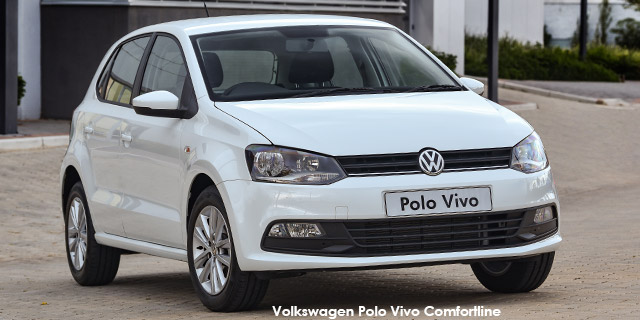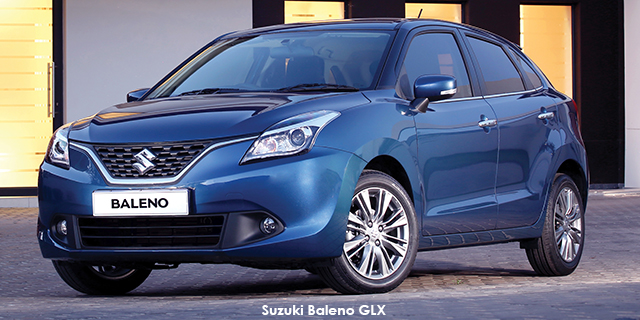We consider three of the strongest contenders in the ever-important budget B-segment: the Ford Figo hatch 1,5 Trend, Volkswagen Polo Vivo 1,4 Comfortline and Suzuki Baleno 1,4 GL...
Traditionally aimed at first-time car buyers, South Africa’s evergreen budget B-segment has been brought into the spotlight more and more in a market where buyers are taking financial strain. While there remains a compelling second-hand market to delve into, as well as a selection of pocket-friendly city runabouts, those options bring a level of compromise, be it in specification or space. Where does a young professional or parents of a small family look in order to find reliable value for money while not compromising on safety or relative comfort?
At the forefront of this segment since the 1984 introduction of the Citi Golf, Volkswagen South Africa continues to make the most of its experience and resources to deliver impressively refined and carefully considered re-engineered versions of its popular Polo range. The latest of these is the newest Vivo. It is based on one of the most accomplished Polo platforms to date and the only concession towards keeping the asking price reasonable was how much of the Polo’s packaging to retain.
While the idea for the original Figo also relied heavily on familiarity with its then-departing Fiesta range, the launch of the second-generation model in 2016 saw the Figo adopt a somewhat more stand-alone character in Ford’s broader portfolio. Ever popular, the recently revised line-up includes the 1,5 Trend manual tested here.
Yes, the recently introduced Swift may seem like the obvious choice to rival the Vivo and Figo, yet Suzuki South Africa’s focus on value for money means that, for a slight stretch above our R200 000 budget, the altogether larger and more practical Baleno comes into play. The Swift, meanwhile, offers a neat buffer should you not want to break through the R200 000 ceiling.
Design and packaging
As alluded to in our earlier test of the Polo Vivo, opting for either Flash Red or optional (R950) Reef Blue metallic paintwork goes a long way to lifting the otherwise conservative, blend-in-with-the-crowd styling of this Volkswagen. However, there’s a lot to be said for the clean, familiar lines that so effortlessly carry on from where the ever-popular previous Polo left off.
Two years after its introduction – and coinciding with a consolidation of the range – the facelifted Figo includes an updated front-end including chrome-effect highlights on the grille and bumper on Trend models. Available in six exterior colours, three trim levels and two body styles (including a sedan), Ford will look to this updated Figo to introduce both young and young-at-heart buyers to the brand.
From a carmaker with a reputation for compact and quirky offerings, the Baleno’s somewhat more sophisticated positioning and stance compared with the rest of Suzuki’s current range of hatchbacks do leave it to rely more on its packaging than attention-grabbing looks. However, as we’ve discovered in two previous road tests, as well as a 12-month long-term test period with a GLX-spec unit, there remains a welcome amount of Suzuki charm and character in the Baleno.
While both Vivo Comfortline and Baleno GL specification include steel wheels with plastic covers as standard fitment (14 inches on the VW and 15 on the Suzuki), the Figo Trend package includes 14-inch alloy items in the purchase price. The GLX specification fitted to the Baleno you see here (a vehicle we used for the photo session) adds chromed door handles and tailgate trim, as well as a rear wing to the otherwise conservative-looking GL model.
Larger in nearly every exterior dimension than its platform-sharing fourth-generation Swift sibling, the Baleno easily trumps both the Polo Vivo and updated Figo in the size department. In real-world terms, this not only scores the Suzuki the largest luggage compartment here (at 296 litres, by our measurements), but also the most generous rear-passenger legroom.
By comparison, the Vivo is the least accommodating for rear occupants, both in its modest spacing and manually operated windows at the back. The Ford offers more legroom (and electric windows) but, unlike the Volkswagen, does so at the expense of luggage space. As a concession, Trend specification includes a 60:40-split rear backrest for increased packing space should the need arise.
Tallest in profile of these three, it’s a pity Ford didn’t think to include driver’s seat-height adjustment for the updated Figo package. Combined with a steering column adjustable only for rake, most testers criticised a slightly compromised (tall) driving position in the Blue Oval offering.
While you can adjust the Suzuki’s steering wheel only upwards or downwards, too, the ability to duplicate this movement with the driver’s seat increases your chances of finding a comfortable seating position. On this note, the amount of cushioning offered by the Suzuki’s cloth-covered seats received universal praise from the test team.
Slightly firmer in its seats, yet supportive in their cushioning, the Vivo makes the best of its fifth-generation Polo lineage to offer a full range of adjustment on both driver’s seat and steering column.
From the driver’s seat, it’s these Polo-based underpinnings that make the Volkswagen feel more substantial and well-finished compared with the other cars. It’s not to say either the Suzuki or Ford displayed any obvious frailties; it’s just that, despite the inevitable presence of hard plastics in each of these budget-friendly cabins, the Vivo with its Polo-based trimmings – including a soft-touch dash – sees its doors close with a more convincing thud.
A notable upgrade for the revised Figo package is a new centre-console architecture incorporating updated ventilation and audio controls; the former is supplemented by a neat new display screen and clever smartphone docking station disguised as a dash-mounted stowage compartment. While steering wheel-mounted controls are standard fitment in the Vivo and Baleno, again it’s a pity the Ford’s comprehensive bouquet of audio functionality doesn’t benefit from this handy feature, too.
While all three cars offer front airbags as standard fitment, the absence of Isofix child-seat anchorage points in the Ford could deter buyers with small children.
Performance
By far the most pleasant surprise of this comparison test is how well Ford’s new 1,5-litre, three-cylinder petrol engine performs. Refined at idle yet plucky and free-revving on the move, it’s a naturally aspirated unit achieving an impressive balance between performance and efficiency. Even running on one fewer cylinder, the Figo reaches 100 km/h from standstill nearly three seconds faster than the Polo Vivo with its proven 1,4-litre engine.
Splitting these two is the Baleno, taking advantage of its lightweight frame (916 kg in GLX guise) to reach 100 km/h in 10,90 seconds. Despite the Figo’s clutch action being trickier to modulate than the third pedal in the other cars, all three contenders offer easy-going progress round town and are comfortable cruising at the national speed limit in fifth (top) gear.
While the Suzuki and Ford returned fuel-route figures of less than 6,0 L/100 km (allowing for a tank-to-tank range of around 600 km), the Volkswagen recorded a slightly thirstier 6,6 L/100 km on our standardised route.
Behind the wheel
Based on accomplished underpinnings, it is unsurprising to find the Vivo feels planted and surefooted on the road, combining well-weighted, precise steering and impressively compliant ride quality, even with optional larger wheels fitted.
While the aforementioned tall seating position adds to an initial top-heavy feeling in the Ford, it takes a few kilometres of driving to appreciate just how engaging and light on its feet the Figo is. Like the Baleno, the Ford’s India-sourced suspension architecture is engineered to cope with most road imperfections, while the Figo does a decent job of hiding corresponding body roll.
The Suzuki feels equally fleet of foot and is easily manoeuvrable around town. Unfortunately, a lightweight, vague electric power-steering system on this Baleno test vehicle meant it needed small but constant corrections to maintain a true course on the highway. While it’s inevitably something a Baleno owner would get used to, the Vivo and the Ford both feel more planted.
Each vehicle makes do with drum brakes at the rear coupled to an ABS system and all three vehicles were able to stop from 100 km/h in a consistent, confidence-inspiring manner.
Peace of mind
While resale values favour the Volkswagen, there’s a lot to be said for the proven track record and reputation for reliability the Suzuki brand has established through the years. In the meantime, Ford continues to deliver impressive new products, including the new Fiesta and Focus, and it’s therefore easy to see why it’s the third-largest manufacturer in South Africa.
Offered on the new Figo range is a four-year/120 000 km warranty and standard four-year/60 000 km service plan. Suzuki matches this service plan while offering a three-year/100 000 km warranty on its Baleno range. We criticised Volkswagen before for not offering a service plan as standard on the Polo Vivo range, and this shortcoming remains. A five-year/60 000 km service plan costs R8 210.
TEST SUMMARY
South African buyers in the budget B-segment are in a favourable position, able to choose between a number of accomplished offerings. Other options such as the more affordable Swift and the ever-popular Hyundai Grand i10 (Hyundai South Africa declined our invitation to appear in this test) add to the choice currently available.
Each of the three vehicles under the spotlight here has its positives and each received constructive criticism for perceived shortcomings. Results tallied, it’s the revised Figo with its more budget-oriented cabin and the absence of a few nice-to-have specification items that garners the lowest – although still respectable – score of 75/100. While its three-cylinder engine is the most impressive in this segment, performance figures carry less weight than overall talent.
That’s something the Baleno has in spades. It may be more expensive than the Figo, but it beats the Ford by virtue of its relatively impressive levels of standard specification (although we’d be tempted by the extra kit available the on GLX for an additional R32 000), better overall refinement and generous amount of interior room, including luggage and rear-passenger space. With this in mind, the Suzuki will likely appeal to buyers with a small family, with both the Figo and Vivo possibly proving too small for this application.
Cramped rear-passenger legroom aside, it’s the Polo Vivo which ticks the greatest number of boxes in the most critical areas when it comes to offering a solid return on investment. Priced to allow for careful consideration as to what is still required – either an upgraded audio system or a service plan – the Vivo Comfortline still undercuts the Baleno on price, all while feeling more sophisticated and rounded than the Figo.
*From the October 2018 issue of CAR magazine
ROAD TEST SCORE

|

|

|

|

|

|

|

|

|

|

|

|
Original article from Car
See Full Volkswagen Polo Vivo Hatch price and specs here



















